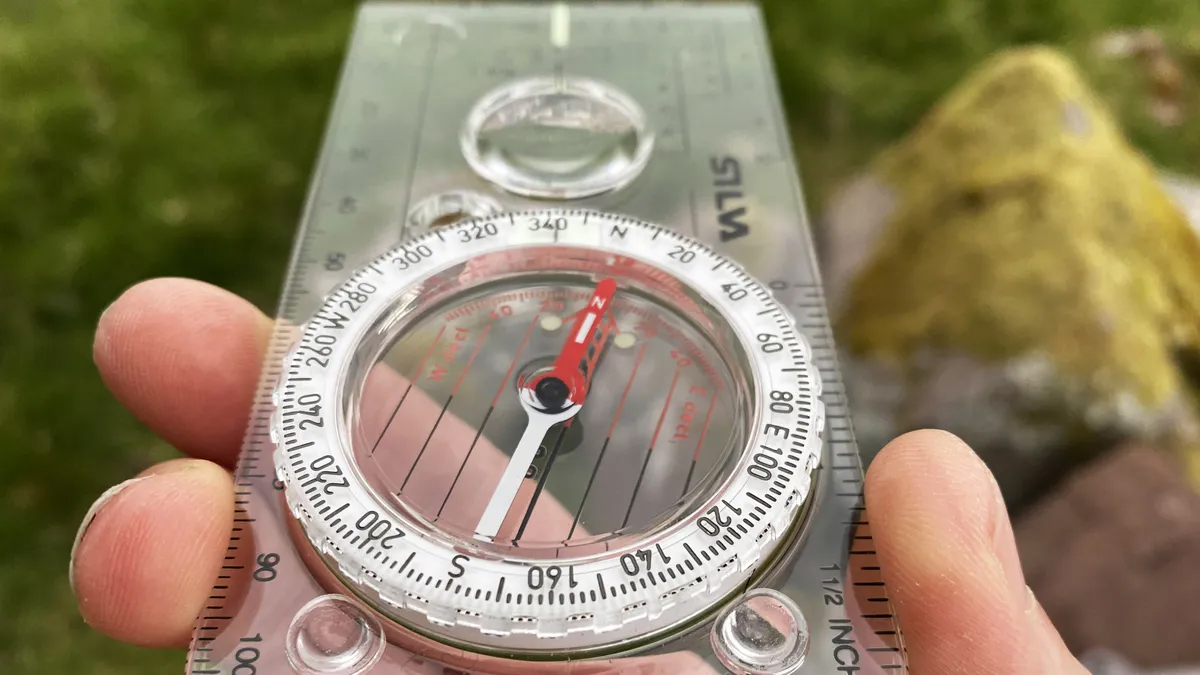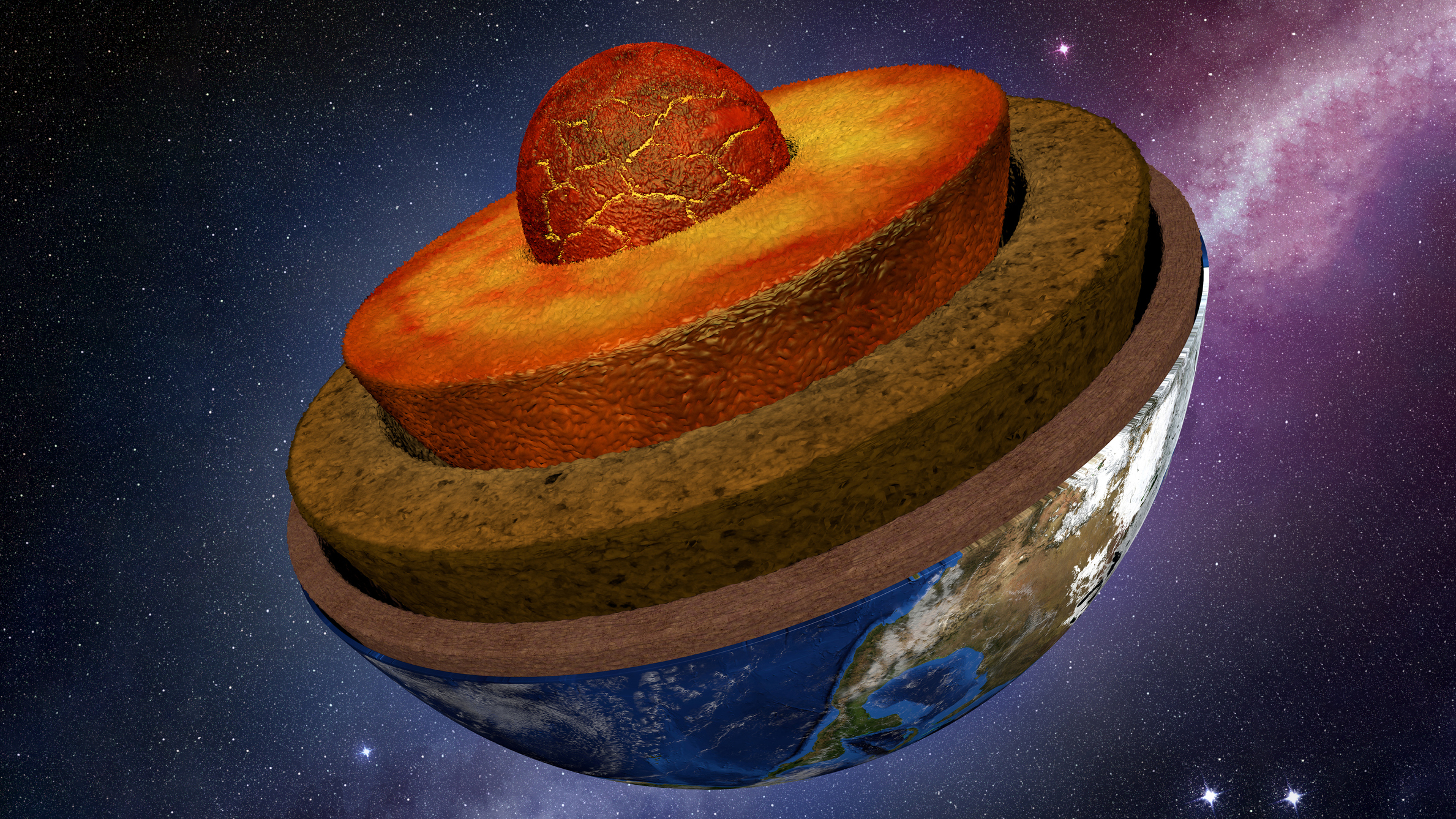How does a magnetic compass work? And what happens if you take it to the North Poles?
We explore how magnetic compasses work, revealing the science behind them and the anomaly you need to bear in mind if navigating over long distances

How does a magnetic compass work? Well, it’s all down to basic physics and human ingenuity. The key component of a standard baseplate compass is its magnetized needle, which is allowed to spin freely within a housing. As the needle is magnetized, the north arrow always points towards the Earth's magnetic north pole, while its other end points to the south pole.
It’s elegantly simple and all baseplate compasses work in this way. However, things get a little more complicated when factors like magnetic variation come into play, which we’ll get into later in this guide.
It’s amazing how our ability to navigate the backcountry is so beautifully tied to how the laws of physics play out across the cosmos. Long have our ancestors used celestial objects to determine direction. For example, in the northern hemisphere, a huge, distant yet conspicuous sphere of hydrogen and helium called Polaris, otherwise known as the North Star, indicated which direction was… you guessed it, north. Even the rising and setting of the sphere of hydrogen and helium we like to think of as our own, the Sun, broadly reveals east and west.

Fast-forward to modern, hi-tech nav and we’re still reliant on good old physics. GPS relies on a system of orbiting satellites, tethered to our planet by the force of gravity. Somewhere in between ancient ships using Polaris to sail in the right direction and the best Garmin watches utilising a satellite technology to pinpoint your location on a run is the baseplate compass. So, let’s get into more detail about exactly how they work.
Meet the expert

Alex is a qualified Mountain Leader and former Head of Science at a London school. He loves disappearing into the mountains and navigating his way through an exciting adventure. Despite being an advocate for komoot, one of the world’s most popular digital navigation and route planning platforms, he also knows the great value of learning traditional navigation when it comes to staying safe in the mountains. He’s a bit of a geek when it comes to the cosmos too and enjoys a bit of amateur astronomy in his limited spare time.
Today’s best deals
Today’s best deals on the Silva Expedition Type 4 compass, which we at Advnture rate as the finest baseplate compass around.
How do magnetic compasses work?
Knowing how to use a compass is an essential skill for wilderness exploration, even in this day of GPS, smartphones and gadgets that sit happily on our wrists. Knowing how they work is slightly less essential but it’s nonetheless interesting and enhances your appreciation of how to use one.
Let’s start with our humble planet, the Earth, which can be thought of as one great big magnet. But what is powering this magnetism? Well, deep within its core is a solid ball of the metallic elements iron and nickel, while in the outer core the iron and nickel are liquid and are constantly on the move. Due to the rotation of the Earth, spiral currents form and generate the magnetic field. This phenomenon is known as the Dynamo Effect.
All the latest inspiration, tips and guides to help you plan your next Advnture!

The whole reason we call the frozen northern and southern points of our planet the poles is because that’s exactly what they are, magnetic poles. In fact, it’s the Earth’s magnetic field that causes the Aurora Borealis (also known as the Northern Lights), when energized particles ejected from the sun travel down the field lines and react with gases high in the atmosphere.
Back to compasses… As already discussed, a standard baseplate compass contains a magnetized needle that always points both north and therefore south. This allows the user to know which way north, south, east and west are at all times. It also gives them the ability to performing advanced techniques, such as taking a bearing in order to navigate in poor visibility.
So, what happens if you take a compass to the poles?
Try this thinking puzzle out on a friend or loved one. An immensely wealthy family tasked their architect with building a seemingly impossible new house where all four walls and their windows would face south. Presumably they enjoyed the sun shining in during the afternoons. After a bit of thought, the architect came up with the solution.
He built the house on the north pole. Stood on the north pole, whichever direction you turn, you face south. The house wouldn’t have been great for catching the sun in the winter but summer would be a riot (if it wasn’t for the awfully cold temperatures). Now extend this thinking to a compass and you’ll realise that the needle might just behave very oddly near the poles too. In fact, it does.

The earth’s magnetic field lines don’t simply run along the surface until they reach the geographic north pole. They actually curve and dive towards the center of the planet, perpendicular to the surface. So, as you approach one of the poles, rather than the needle being attracted to what’s ahead, it’s attracted to what’s below, down towards the core. As you can imagine, this plays havoc with the needle.
What is magnetic variation/declination?
As well as all of this, the magnetic poles aren’t fixed, they move all over the place as the Earth's magnetic field shifts. It was in the 15th century that explorers discovered that there was a slight difference between True North (the direction of a meridian of longitude, which all converge at the North Pole), Grid North (the direction of a grid line which is parallel to the central meridian on the National Grid) and magnetic north. I say slight, but in the context of an entire planet this difference can be thousands of miles.

This is magnetic declination, the disparity between magnetic north and True North, which is slowly changing all the time and is different depending on where you are in the world. For example, the degree of variation in November 2023 from Greenwich in London (my old gaff, incidentally) is a reasonably small +0.84 degrees, whereas from New York, it’s -3.33 degrees. Fortunately, you can counter this by knowing how to adjust for magnetic declination, but that’s another story.
Alex is a freelance adventure writer and mountain leader with an insatiable passion for the mountains. A Cumbrian born and bred, his native English Lake District has a special place in his heart, though he is at least equally happy in North Wales, the Scottish Highlands or the European Alps. Through his hiking, mountaineering, climbing and trail running adventures, Alex aims to inspire others to get outdoors. He's the former President of the London Mountaineering Club, is training to become a winter mountain leader, looking to finally finish bagging all the Wainwright fells of the Lake District and is always keen to head to the 4,000-meter peaks of the Alps. www.alexfoxfield.com

